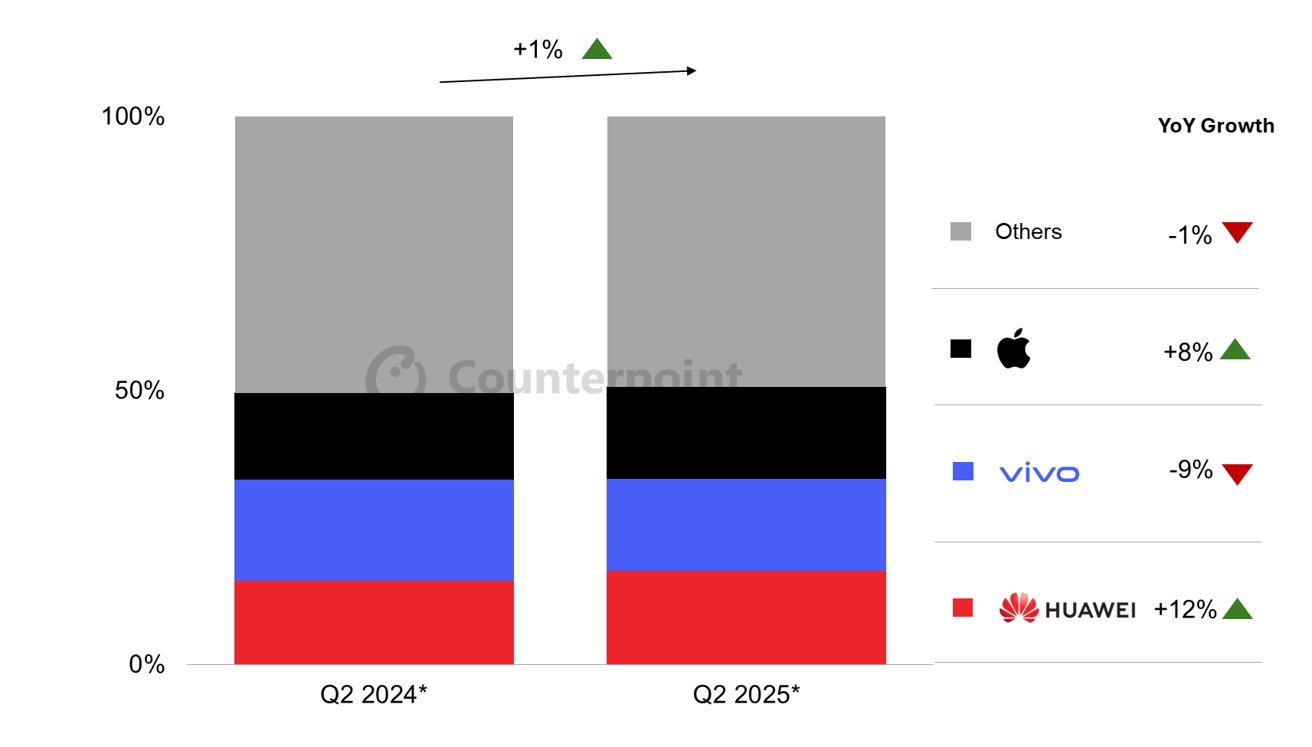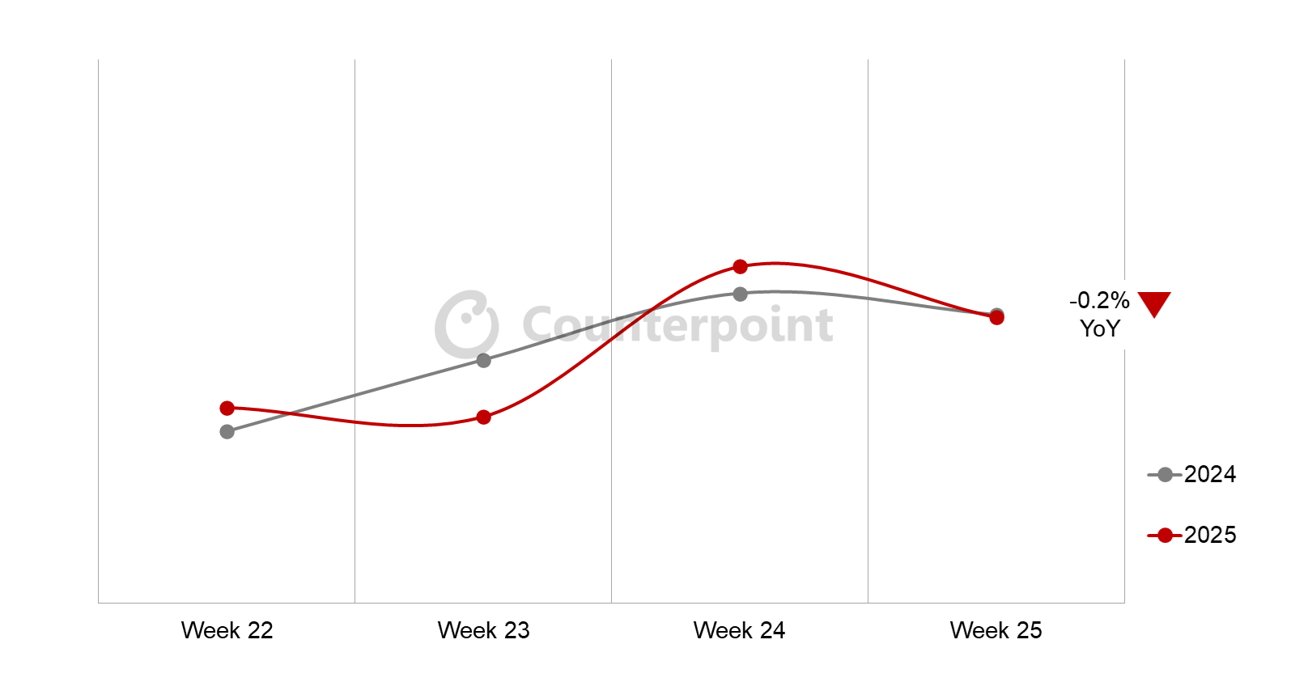Apple's iPhone 16 push delivers rare growth in China's cooling market
While China's smartphone sales stall overall, Apple grabbed growth with smart pricing, subsidies, and its broad iPhone 16 lineup.

iPhone 16 lineup
Apple posted high single-digit growth in China's smartphone market during the second quarter of 2025. Sales rose on the strength of promotions and demand for the iPhone 16 Pro and iPhone Pro Max models.
Counterpoint Research reported that Apple's price cuts in May lifted performance despite modest overall market growth. China's smartphone sell-through in Q2 2025 is expected to show slight year-over-year growth.
Huawei led major brands and is projected to take the top spot for the quarter. Spending during the 618 shopping festival was flat, but May sales improved thanks to national subsidy programs.
Apple's results reflected that pattern. Three iPhone models landed in the top half of bestsellers during the shopping period. Analysts warned growth could slow in the second half of 2025 if planned subsidy cuts reduce consumer incentives.
Impact of various iPhone models
Apple also benefited from the release of the iPhone 16e earlier in 2025. The lower-cost model helped Apple attract more budget-conscious buyers in China's competitive midrange market.

Smartphone market share in China by manufacturer. Image credit: Counterpoint Research
The iPhone 16e expanded Apple's reach beyond premium buyers and added volume to overall sales. Combined with the iPhone 16 Pro and iPhone 16 Pro Max, it delivered strong results across price segments.
China's economy has slowed. Consumers are more cautious about spending on premium goods, including smartphones.
Subsidies and promotions have become essential tools to maintain sales in this environment. Brands are under pressure to justify prices to hesitant buyers.
Longer-term implications for Apple
Apple faces intense competition in China. Huawei is regaining share after sanctions cut its sales in prior years. Xiaomi, Oppo and Vivo target price-sensitive customers with aggressive pricing and advanced features.
Apple must maintain its premium image while competing on value during key sales periods. The company cut iPhone 16 prices ahead of the 618 festival. That move encouraged buyers to upgrade before competitors launched their own discounts.
The strategy boosted May sales even as June's festival results were flat year over year. The timing showed Apple's understanding of China's promotional calendar.

Smartphone sales in China during the 2025 618 event. Image credit: Counterpoint Research
Government subsidies in May supported demand. These programs aim to boost consumer spending and help local production.
Analysts warned that reductions in these subsidies later in 2025 could reveal weaker underlying demand. Without incentives, market growth may slow or reverse.
Apple's strong second-quarter results confirm its grip on China's premium market. Sustaining that success is not guaranteed. Competitors are closing the hardware gap while offering lower prices.
Growth in smaller cities depends on reaching more price-sensitive buyers. Apple will need to balance premium branding with broader market appeal.
Historical comparison and supply chains
Apple's current momentum follows years of market volatility. The pandemic disrupted supply chains and weakened demand. Trade tensions added uncertainty.
The company has recovered in the past by localizing production and adjusting marketing to Chinese preferences. The market remains unpredictable, with regulatory risks and geopolitical pressures still present.
Apple has expanded local manufacturing to reduce import costs and ease regulatory concerns. It has also grown its retail footprint in China. These investments build brand loyalty and improve service in a market known for fast-changing consumer tastes.
The company's second-quarter performance demonstrates its resilience in China. Apple will need to keep adapting as subsidies decline, competition intensifies, and consumers become more selective with spending.
Read on AppleInsider

Comments